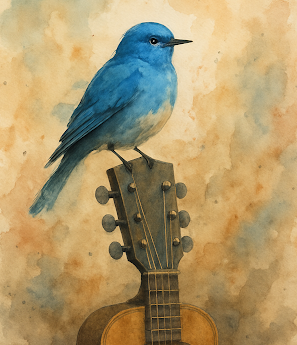Speaking for Success
Prior Lake Speech Info Category
Prior Lake High School has many intriguing clubs and activities — one activity being Prior Lake Speech Team. This enormous team is crushing meets with their bubbling and energetic 85 team members, each being in a different category. One of the many competitive categories on the speech team is Informative Speaking, where speakers choose their own topic and write their own speech to inform their audience with the help of visual aids.
Informative speakers is well known for their big board cases and sturdy stands. If you were to go to a speech meet, you would definitely know where info is at because of the scattered and empty boards and stands. If you choose to sit in an informative round, you may be sitting in awe after the round, or maybe struggling to wake up. The fact that speakers can pick their own topic is both awesome and boring. Trust me, listening to a speech about garbage for ten minutes isn’t exactly a breath taker.
But, I can tell you that all of the “info fam’s” speeches this year at Prior Lake are dynamite. Not only are the info speakers skilled this year, we have an amazing coach that wouldn’t let us choose garbage as a topic. Mackenzie Madsen is the head coach for Informative Speaking and Original Oratory (info but persuasive), and she is loving it. I think all the Info and O.O. kids can say that having Madsen as a coach definitely helps our success.
Being an informative kid, I love to know about other kids’ speeches and their topics. Below are some excerpts from a few speeches from the info fam. If you would like to hear more and you’re on the edge of your seat, feel free to call the writer up and have them give you their full speech!
First Impressions:
Makeup also affects your first impression. In a study done by the University of Chicago Illinois, in 2015, they got 27 women and took pictures of them wearing no make-up, their own makeup, and control makeup and were assigned randomly to three different binders. Each binder had 100 participants rate on a scale of 1-10 on their initial impression of the photographs. Results showed that the females with the control make-up had, on average, 37% better of a first impression compared to the females wearing no makeup at all. A full face of make might do the trick, but a full head of hair won’t get you quite the same results. In an experiment done by the University of Pennsylvania in 2017 some undergraduates looked at photos of 25 different men, some with a full head of hair, and others with a shaved head. The men with shaved heads were rated more dominant that the men with a full head of hair. I don’t know about you, but the first time I saw Steve Harvey, dominant was the last thing that came to mind. Now, this isn’t because of his lack of hair, It’s because of his face. A study done by the University of York in 2014, shows that our facial features plays massive role in how people makes snap judgment about us.
– Preethi Kumar (Sophomore : second year on speech team)
Traumatic Stress:
If a person has a traumatic experience, two key chemical reactions occur in their brain; the releases of adrenaline and cortisol. This is your fight, flight or freeze. Your retinas are constantly sending visual information to your brain before higher levels of the brain are aware of a threat. If this threat endangers you, it goes to your brain. Specifically, the hypothalamus, which signals to the pituitary gland to release adrenocorticotropic hormones, or ATCH.This initiates the release of adrenaline and cortisol creates the fight or flight response. The National Institute for the Clinical Application of Behavioral Medicine discovered in 2015 that it is not always safe or possible to fight or escape, so that is when your body chooses to freeze. We choose to freeze when we feel trapped. This isn’t a cognitive choice and often people blame themselves for freezing when in reality, this mechanism can save your life, especially during inescapable trauma. Oftentimes when a person is being threatened in some way, it makes the situation worse if you try to fight the person off like a Walmart version of Batman. That would not end well. By being passive, you don’t aggravate the person, which can ultimately save your life.
– Abby Kerr (Freshman : first year on speech team)
Imaginary Friends:
Developmental psychologist Marjorie Taylor explains in a 2016 article, “an imaginary companion is a friend whom a child has created, talks about, or interacts with on a regular basis.” Children may make up a friend because it’s fun and comforting. When children have someone to talk to all the time, they have help with their decisions, giving them extra comfort. Kimberly Eckert, a registered psychologist in Calgary, tells us that “An imaginary friend can also be used as a form of self-soothing during a big transition, such as adjusting to a new home or sibling. It’s a way for children to practice fledging social skills in an environment where they’re in control.” So we know kids create imaginary friends for fun, extra comfort, and for social control, but what happens in these children’s brains? Kids know their friends are imaginary: they have the ability to separate pretend play from real life. Imaginary friends and play house use the same social agents in our brains. These imaginary thoughts are separated from real thoughts. The occipital lobe is located it the lower, back part in the brain which contains the visual cortex, which processes visual information. On the other hand, the parietal lobe sits above the occipital lobe and combines sensory information, such as touch, and sound. Dr. Giulio Tononi, neuroscientist at University of Wisconsin-Madison says “The visual information from real events that the eyes see flows ‘up’ from the brain’s occipital lobe to the parietal lobe, but imagined images flow ‘down’ from the parietal lobe to the occipital lobe. The ‘flow’ is the general direction of electrical signaling of neurons in the brain”. The brain actively reconstructs mental images, starting with the big concept, and moving back toward the smaller elements, creating the images of imaginary friends.
– Natalie Hoepner (Sophomore : second year on team)










